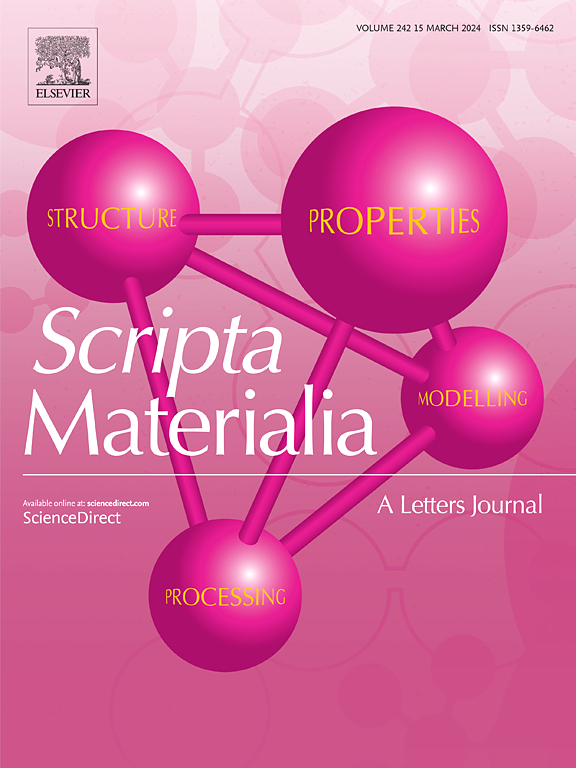Strengthening grain boundaries in high-entropy intermetallics through the incorporation of metalloid and nonmetal interstitials
IF 5.6
2区 材料科学
Q2 MATERIALS SCIENCE, MULTIDISCIPLINARY
引用次数: 0
Abstract
Ordered intermetallics are critical for achieving ultra-high strength in high-temperature alloys but often suffer from limited ductility. While metalloid doping has been extensively recognized in conventional intermetallics, its applicability to recently developed high-entropy intermetallics (HEIs) remains unclear. In this study, we investigate the influence of interstitial elements on grain boundary (GB) strengthening in HEIs, focusing on a model L12-structure (NiCoFeAlTi) system. Through systematic density functional theory and Monte-Carlo (DFT-MC) simulations, we evaluate the segregation, formation, and strengthening energies of B, C, N, and O interstitials at GBs. Our results indicate that elements with strong covalent bonding preferentially segregate to GB regions, enhancing cohesion energies. The strengthening efficacy is governed by the interplay between local structural ordering, volume expansion, and the inherently complex energy landscape of HEIs. These findings clarify the atomic-scale mechanisms underpinning interstitial strengthening and establish design principles for optimizing HEI compositions.

在高熵金属间化合物中,通过加入类金属和非金属间隙强化晶界
有序金属间化合物是实现高温合金超高强度的关键,但其延展性有限。虽然类金属掺杂在传统金属间化合物中得到了广泛的认可,但其在最近开发的高熵金属间化合物(HEIs)中的适用性尚不清楚。在这项研究中,我们研究了间隙元素对HEIs中晶界(GB)强化的影响,重点研究了模型l12结构(NiCoFeAlTi)体系。通过系统密度泛函理论和蒙特卡罗(DFT-MC)模拟,我们评估了B、C、N和O在GBs上的偏析、形成和强化能。结果表明,具有强共价键的元素优先向GB区分离,从而提高了内聚能。强化效能受高等学校局部结构有序、体积扩张和自身复杂的能源格局的相互影响。这些发现阐明了支持间隙强化的原子尺度机制,并建立了优化HEI成分的设计原则。
本文章由计算机程序翻译,如有差异,请以英文原文为准。
求助全文
约1分钟内获得全文
求助全文
来源期刊

Scripta Materialia
工程技术-材料科学:综合
CiteScore
11.40
自引率
5.00%
发文量
581
审稿时长
34 days
期刊介绍:
Scripta Materialia is a LETTERS journal of Acta Materialia, providing a forum for the rapid publication of short communications on the relationship between the structure and the properties of inorganic materials. The emphasis is on originality rather than incremental research. Short reports on the development of materials with novel or substantially improved properties are also welcomed. Emphasis is on either the functional or mechanical behavior of metals, ceramics and semiconductors at all length scales.
 求助内容:
求助内容: 应助结果提醒方式:
应助结果提醒方式:


